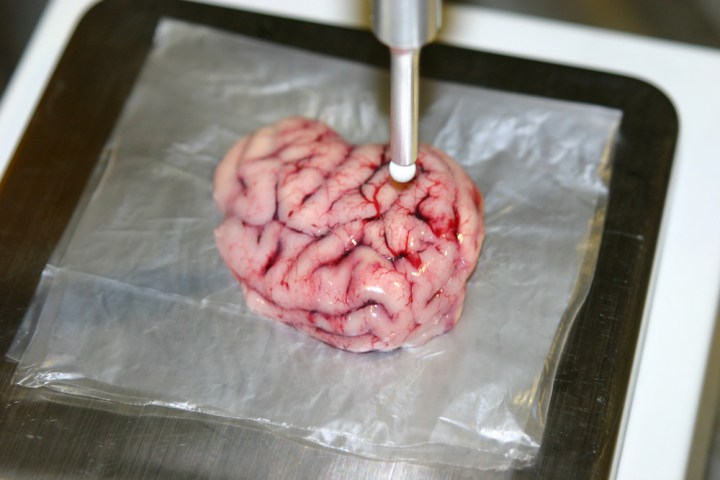
Advanced medical imaging technology like MRIs and ultrasounds can help doctors diagnose tumors before surgery is ever on the table. Uribe wanted to create a tool that would decrease risk and improve accuracy while surgery is already underway. “Although imaging techniques such as an MRI and an ultrasound locate a tumor accurately before the surgery, during the cranial opening and throughout the surgical procedure there are many factors that can lead to the loss of this position, so the resection (the removing of the tumor) depends on the experience, as well as the senses of sight and touch of the surgeon,” Uribe said.
Uribe’s smart scalpel doesn’t actually do any cutting or dissection. It is the size of a medical-grade scalpel, but instead of a sharp knife tip, the tool ends in a round ball with a diameter of under one millimeter. The ball tip is packed with sensors that take less than half a second to alert neurosurgeons to either visual or auditory cues that display the status of the tissue it’s touching. Designing a display that is informative without being distracting will be crucial to the tool’s usability in real-time neurosurgery.
Early stage cancers aren’t always visible to the eye, even using microscopic imaging techniques. So Uribe designed the smart scalpel to be able to detect cancers that are advanced enough to show up on an MRI, but may not be visible to the surgeon performing an operation. So far, the smart scalpel prototype has been tested in artificial tissue that included simulations of both healthy and cancerous cells, and in pig brains. Results from lab trials on pig brains were so successful, Uribe is now moving into a phase of trials in humans. In the future, Uribe also believes the technology could be miniaturized to detect cancerous tissue in other parts of the body like the stomach or intestines.



